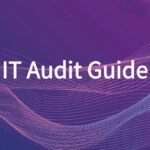In today’s technology-driven world, businesses increasingly rely on digital systems, cloud platforms, and software to deliver services and drive growth. With this reliance comes greater scrutiny—especially when it comes to risk, governance, compliance, and investment decisions. Two essential tools that help organizations evaluate and strengthen their IT environment are IT Due Diligence and IT Audit.
While they may sound similar and even touch on overlapping areas like cybersecurity or IT governance, these two processes serve very different purposes. In this article, we’ll explore the key differences between IT Due Diligence and IT Audit, when each is used, and why understanding both is essential for IT leaders, business executives, investors, and auditors.
🔍 What Is IT Due Diligence?
IT Due Diligence is a strategic and investigative process conducted primarily before significant business transactions—such as mergers, acquisitions, investments, or strategic partnerships. Its purpose is to evaluate the health, capabilities, scalability, and risks of an organization’s technology environment to support critical business decisions. It is one of the most critical areas of due diligence.
✅ Think of IT due diligence as a pre-deal health check of IT systems, people, infrastructure, and risks—performed under tight timelines to inform whether a deal is viable and what post-deal investments may be needed.
🛠 What Is IT Audit?
IT Audit is a formal, process-driven assessment of an organization’s IT controls, policies, and systems to ensure compliance, risk management, and governance standards are met. It is usually performed periodically by internal audit teams, external auditors, or third-party assessors.
✅ An IT audit helps answer the question: Are your IT systems secure, compliant, and well-controlled based on regulatory and organizational requirements?
📊 Key Differences Between IT Due Diligence and IT Audit
| Aspect | IT Due Diligence | IT Audit |
|---|---|---|
| Objective | Support a business transaction by identifying risks, value, and gaps in IT systems | Provide assurance on IT controls, risk mitigation, and compliance |
| Timing | Pre-deal (e.g. during M&A, investment, IPO readiness) | Ongoing or scheduled (e.g. annual audits, compliance cycles) |
| Audience | Investors, acquirers, senior executives | Audit committee, internal control, regulators |
| Scope | Broad: IT strategy, systems, costs, cybersecurity, vendor contracts, technical debt | Deep: IT general controls (ITGCs), access management, backup, change control |
| Focus | High-level review of risks and future value | In-depth control testing and evidence validation |
| Speed | Rapid (days to weeks), fast-paced, deal-driven | Structured and methodical (weeks to months) |
| Frameworks | Often custom or flexible | Based on standards like COBIT, NIST, ISO 27001, SOX, etc. |
| Deliverable | Due diligence report with red flags, risk heatmaps, deal insights | Audit report with findings, risk ratings, and remediation plans |
📌 Example Use Cases
💼 IT Due Diligence
- A private equity firm is considering acquiring a software company. Before finalizing the deal, they want to:
- Assess cybersecurity maturity
- Evaluate technical scalability of the platform
- Understand vendor dependencies and licensing risks
- Forecast post-acquisition IT investment
🔍 IT Audit
- A publicly listed company performs its annual IT audit to:
- Ensure compliance with SOX requirements
- Test user access controls and change management processes
- Evaluate backup and disaster recovery readiness
- Validate that security policies are being followed
🔁 Where They Overlap
Despite their differences, both processes often assess:
- Cybersecurity controls
- Third-party risk and vendor management
- IT governance and organizational structure
- Business continuity and disaster recovery
- Data privacy and protection practices
However, IT Due Diligence takes a strategic lens, while IT Audit uses a compliance and control lens.
🎯 Why It Matters
Understanding the difference is critical because:
- Business leaders and investors rely on IT due diligence to make informed investment decisions and plan integration strategies.
- Risk officers and compliance teams depend on IT audits to ensure systems are secure and policies are followed.
- CIOs and IT managers benefit from both by identifying gaps and proactively improving IT governance, whether in preparation for a transaction or to meet internal standards.
Misusing one in place of the other can lead to incomplete risk assessments, poor investment decisions, or compliance failures.
✅ Final Thoughts
While IT Due Diligence and IT Audit both serve to assess the technology landscape, they do so from very different perspectives. Whether you’re preparing for a major acquisition or conducting a routine audit, knowing which process to use—and when—will help you drive smarter decisions, reduce risk, and add strategic value.
Need help conducting an IT audit or preparing for due diligence?
Feel free to reach out our free IT Audit & Due Diligence Series Guide to get started.

- A Comprehensive Guide to IT Audit: Purpose, Frameworks, Processes, and Best Practices
- IT Audit Guide 01: What Is IT Audit? Why IT Audit Matters?
- IT Audit Guide 02: Why and When to Conduct IT Audit?
- IT Audit Guide 03: Common IT Audit Frameworks
- IT Audit Guide 04: Scope and Content of IT Audit Work
- IT Audit Guide 05: IT Audit Process (Step-by-Step Guide)
- IT Audit Guide 06: IT Audit Templates and Checklists
- IT Audit Guide 07: IT Audit Deliverables
- IT Audit Guide 08: IT Audit Best Practices

